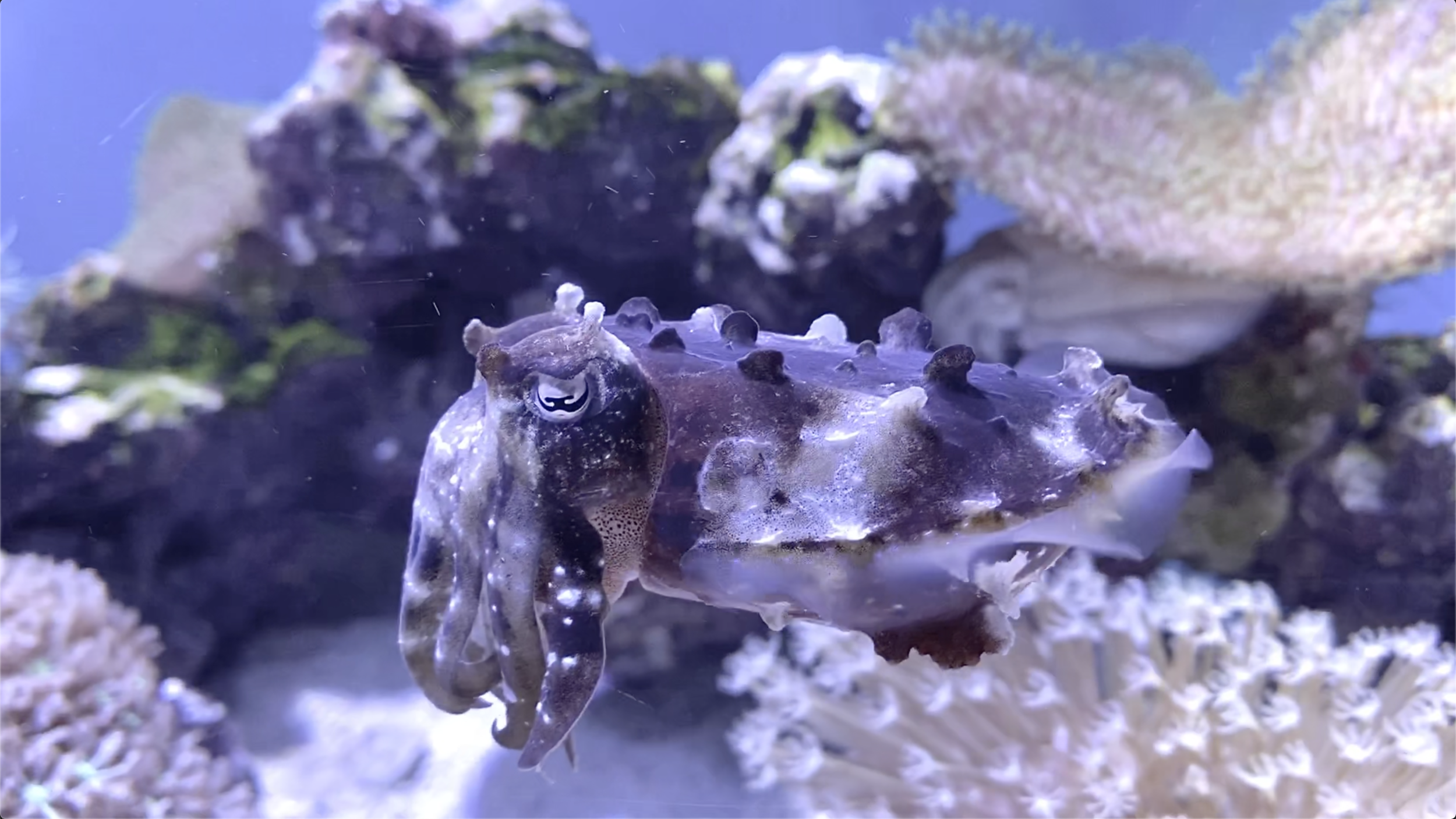
Cuttlefish alter the color, pattern and texture of their skin to camouflage and communicate with other animals. The color and texture of cuttlefish skin is controlled by the brain.
Cuttlefish are coleoid cephalopods that dynamically change the color, pattern and texture of their skin to camouflage with their surroundings. Camouflage is achieved by expanding and contracting pigment- filled saccules in the skin called chromatophores, through the action of motor neurons that project from the brain. Thus, the patterning of the skin is a physical manifestation of neural activity in the brain.
We are using this system to understand how the physical properties of the visual world are represented by patterns of neural activity in the brain, and how this representation is transformed into an approximation of the physical world on the skin.
We have performed a series of experiments to develop the dwarf cuttlefish, Sepia bandensis, as a model to investigate the neural basis of camouflage. We have described the stages of embryonic development (Montague et al. 2021), sequenced the genome and neural transcriptome (Lorig-Roach et al. 2023), completed a 3D brain atlas (Montague et al. 2023), and developed a visually-evoked camouflage behavioral paradigm. Furthermore, we are generating transgenic cuttlefish that express genetically-encoded calcium indicators and light-activated channels, permitting the live imaging and manipulation of neural activity.
These technologies should permit us to simultaneously record neural activity and measure behavior to uncover how visual information is deconstructed in the brain, and then reconstructed into an image of the physical world on the skin.
To take advantage of the cuttlefish’s unique biology, we are developing a toolkit for the dwarf cuttlefish, Sepia bandensis, hosted on our website, Cuttlebase. Current tools include a developmental staging series, a brain atlas, body atlas, and the dwarf cuttlefish genome.
I am the Education Director for BLAST - Bio Labs for African Students and Teachers. Each year Dr. Nancy Sey, Dr. Fred Rubino and I travel to Ghana to run hands-on biology workshops for high school students. We are currently raising funding to expand to other countries in Africa.
During my Ph.D., I co-created a CRISPR/Cas web tool called CHOPCHOP. We are continually adding new genomes to CHOPCHOP requested by members of the scientific community. We currently host over 500 species, from viruses to plants to pigs.